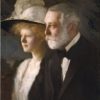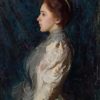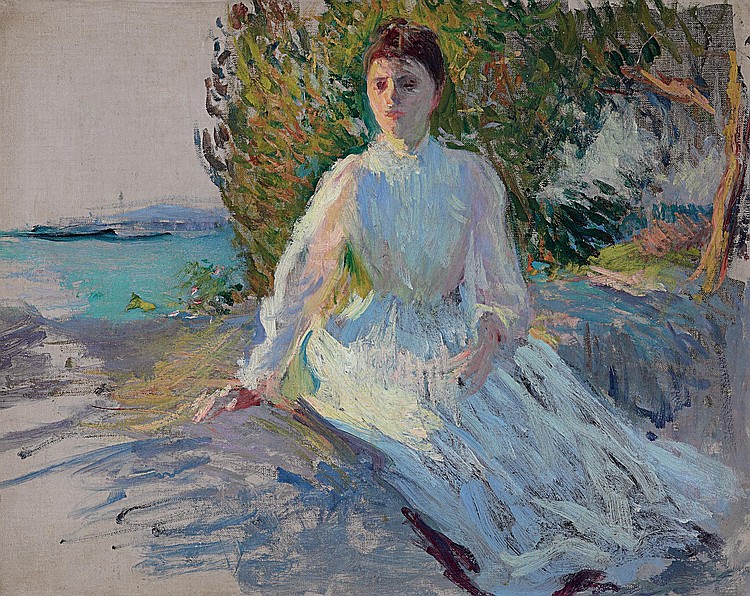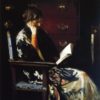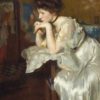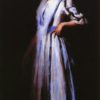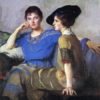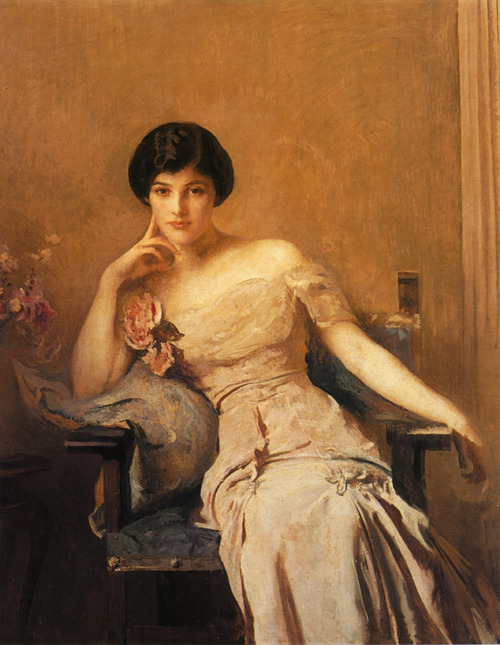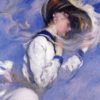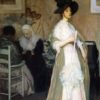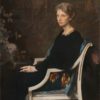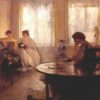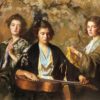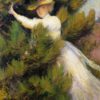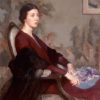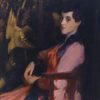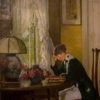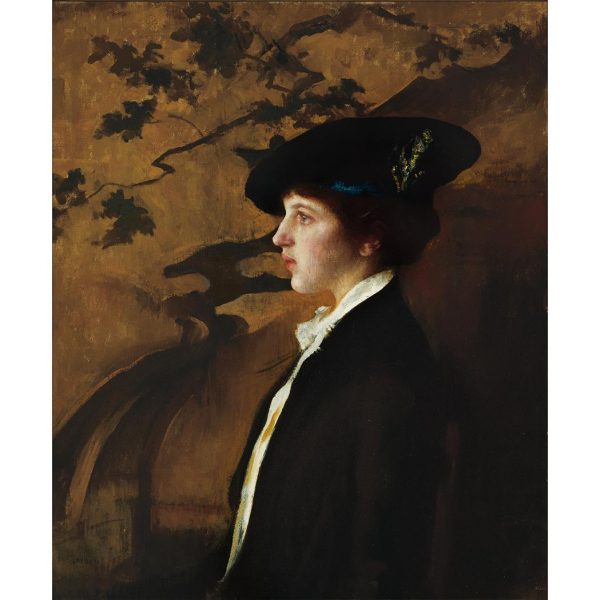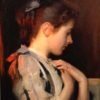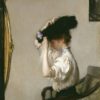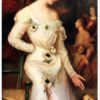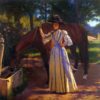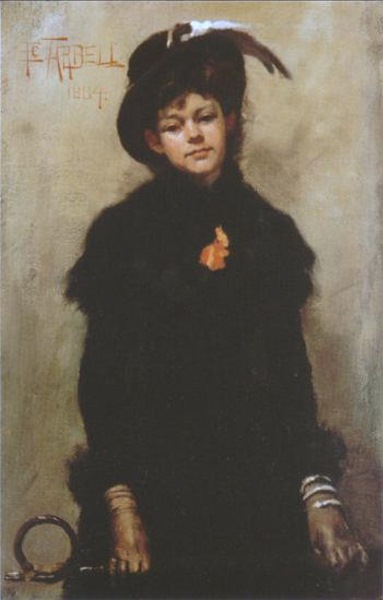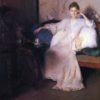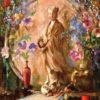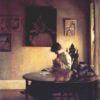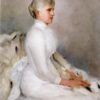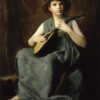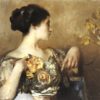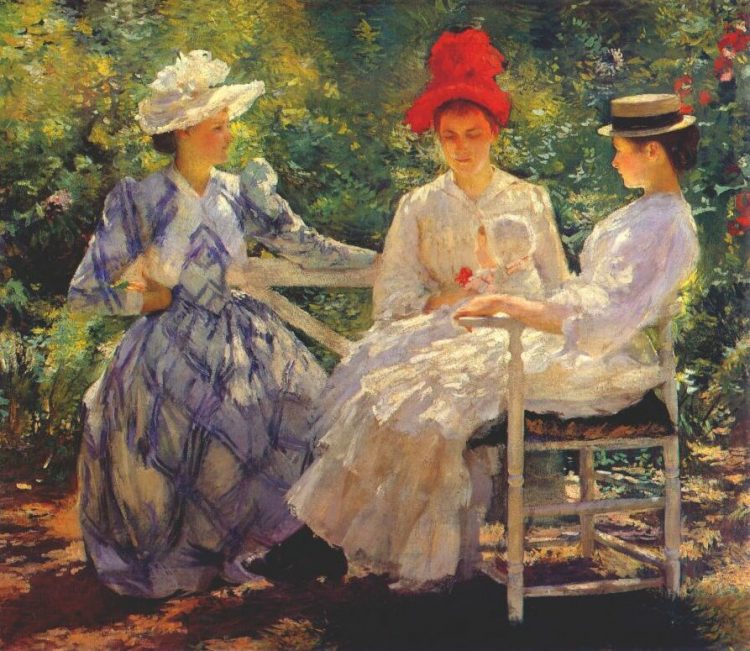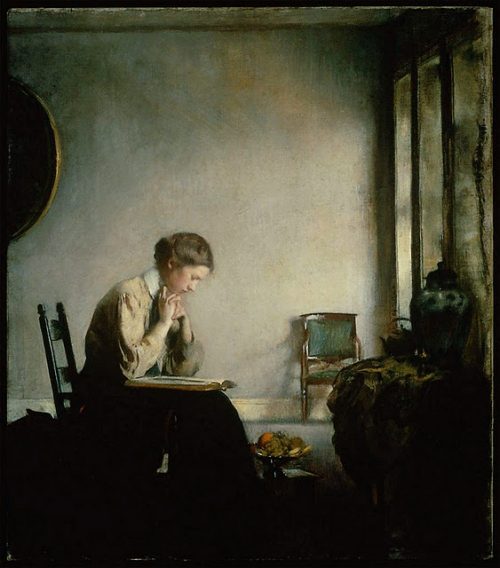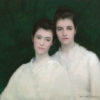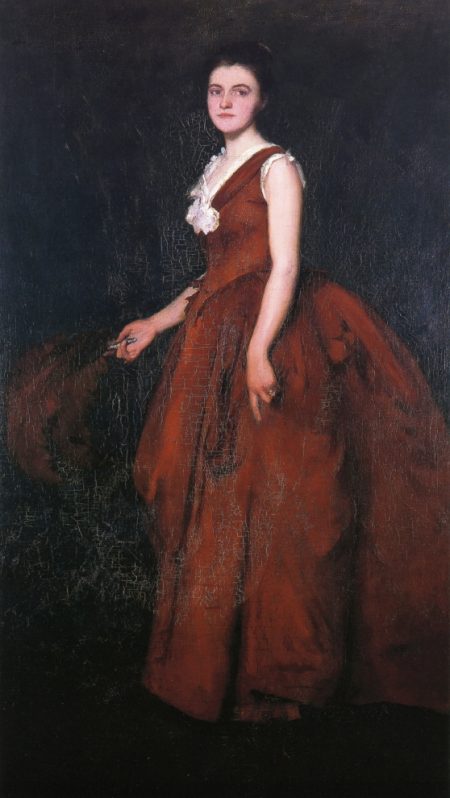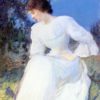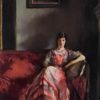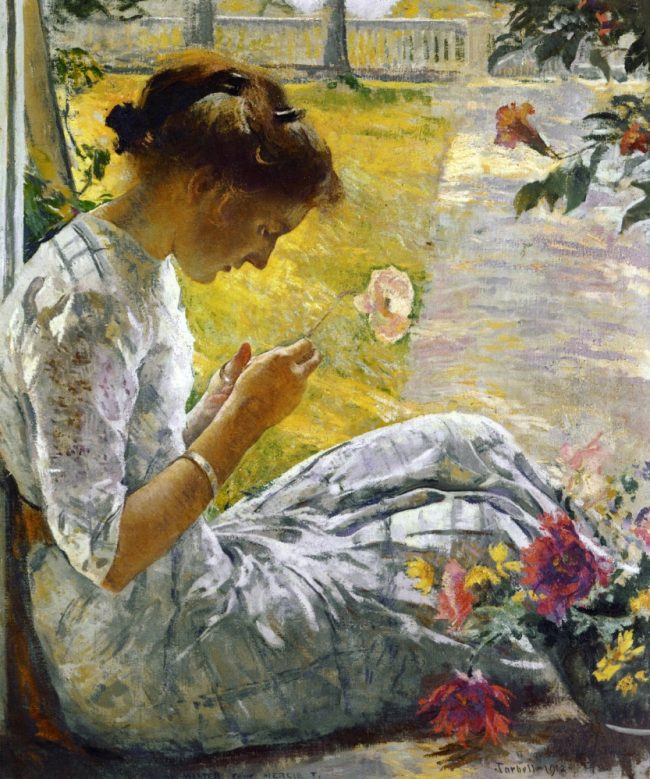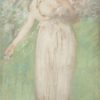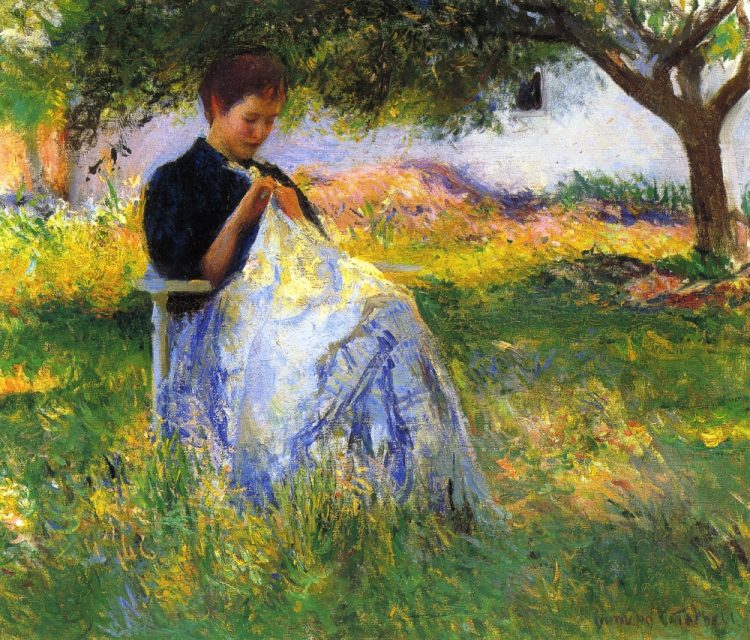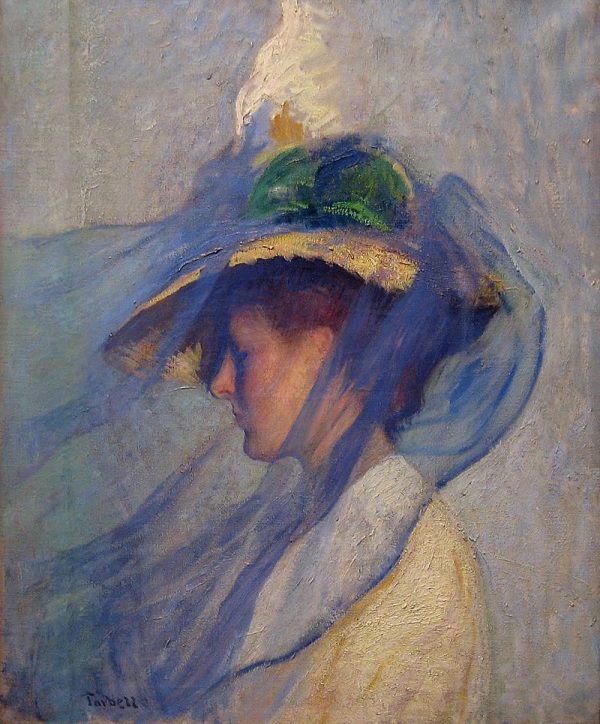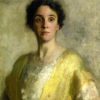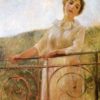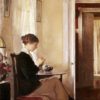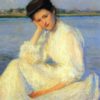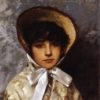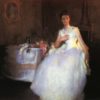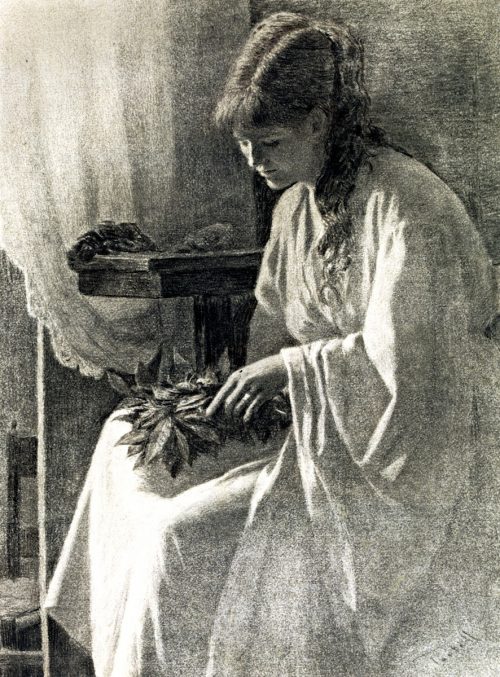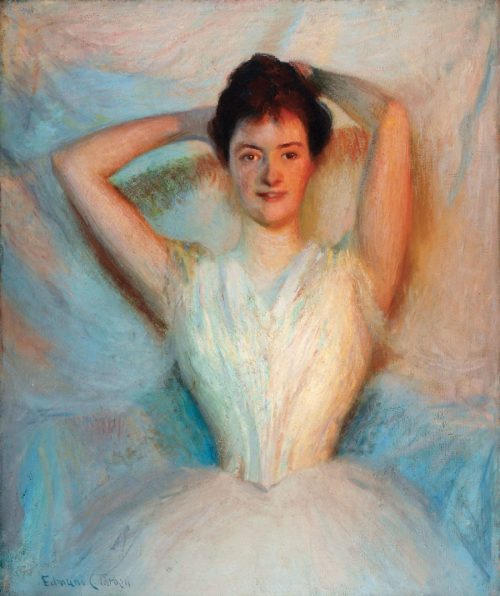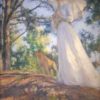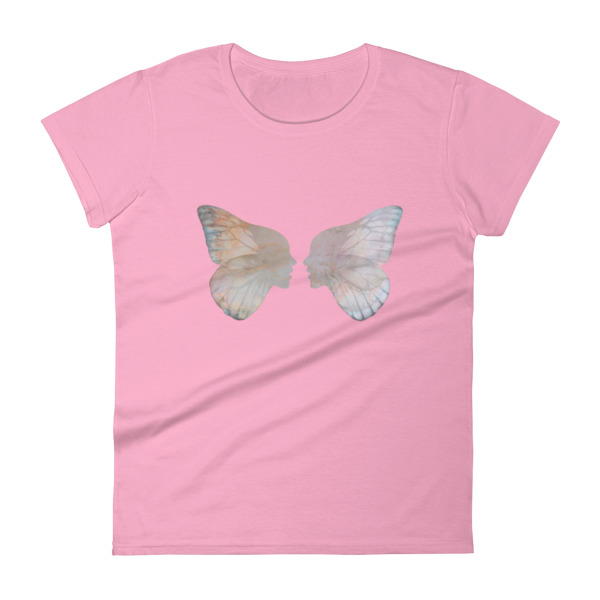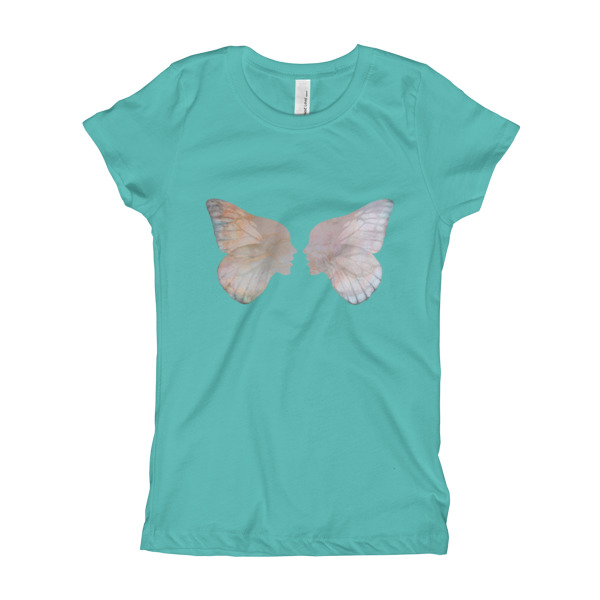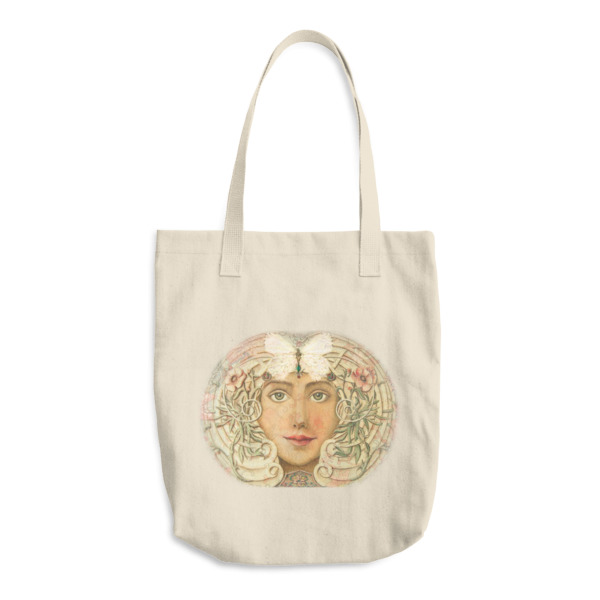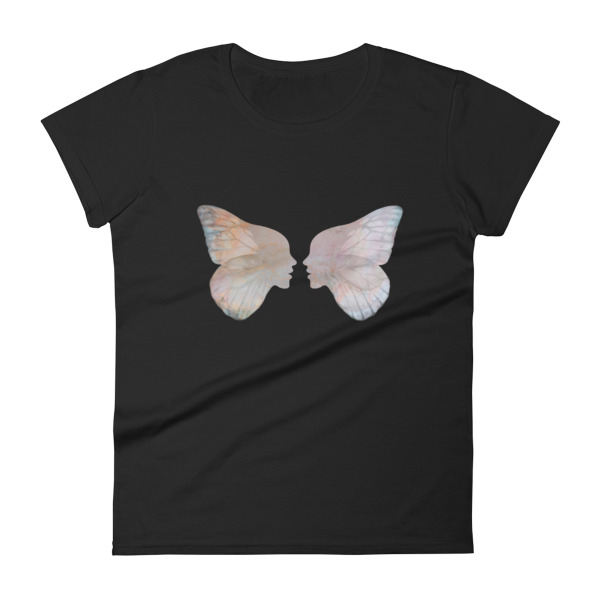Edmund C Tarbell (1862-1938)
Edmund Charles Tarbell was an American Impressionist painter. A member of the Ten American Painters, his work hangs in the Boston Museum of Fine Arts, Metropolitan Museum of Art, National Gallery of Art, Smithsonian American Art Museum, Corcoran Gallery of Art, DeYoung Museum, National Academy Museum and School, New Britain Museum of American Art, Worcester Art Museum, and numerous other collections. He was a leading member of a group of painters which came to be known as the Boston School.
As a youth, Tarbell took evening art lessons from George H. Bartlett at the Massachusetts Normal Art School. Between 1877 and 1880, he apprenticed at the Forbes Lithographic Company in Boston. In 1879, he entered the School of the Museum of Fine Arts, Boston, studying under Otto Grundmann. He matriculated in the same class with Robert Lewis Reid and Frank Weston Benson, two other future members of the Ten American Painters.
Tarbell was encouraged to continue his education in Paris, France, then center of the art world. Consequently, in 1883 he entered the Académie Julian to study under Gustave Boulanger and Jules Joseph Lefebvre. Paris exposed him to rigorous academic training, which invariably included copying Old Master paintings at the Louvre, but also to the Impressionist movement then sweeping the city’s galleries. That duality would inform his work.
In 1884, Tarbell’s education included a Grand Tour to Italy, and the following year to Italy, Belgium, Germany and Brittany. Tarbell returned to Boston in 1886, where he began his career as an illustrator, private art instructor and portrait painter.
In 1889, Tarbell assumed the position of his former mentor, Otto Grundmann, at the Museum School, where he was a popular teacher. He gave pupils a solid academic art training: before they learned to paint, they had to render from plaster casts of classical statues. His students included Bertha Coolidge, Margaret Fitzhugh Browne, Marie Danforth Page, F. Luis Mora, Marguerite Stuber Pearson, and Lilian Westcott Hale.
So pervasive was his influence on Boston painting that his followers were dubbed “The Tarbellites.”
